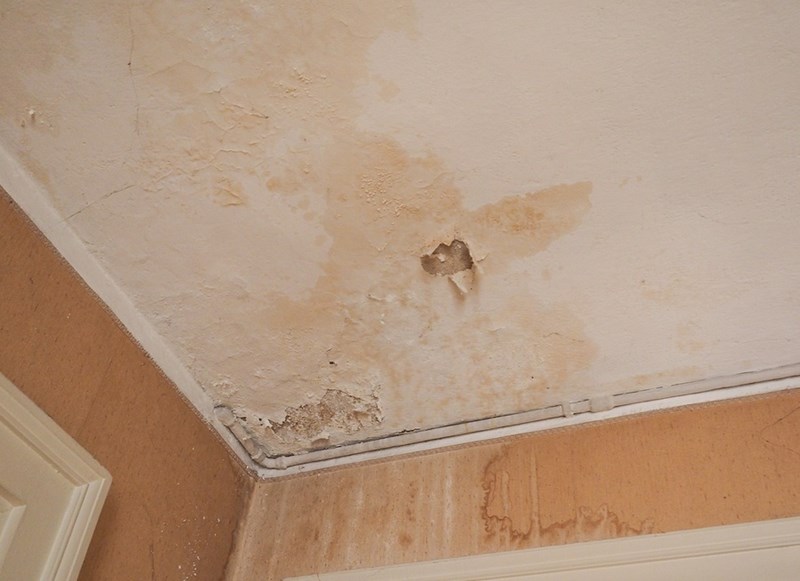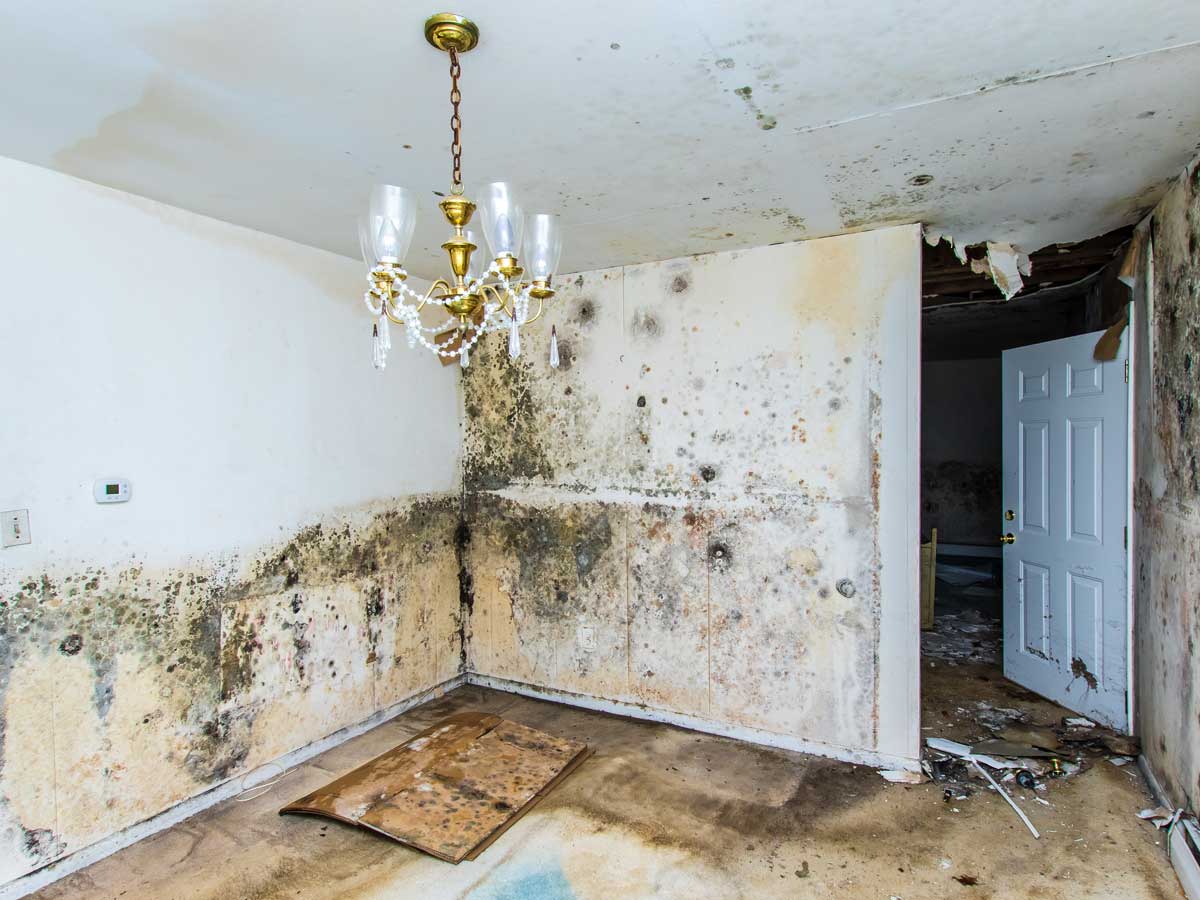The Process of Water Damages Cleanup: Ensuring Your Home Is Brought Back Properly
Water damage can be a daunting obstacle for homeowners, demanding a thorough and organized clean-up procedure to restore safety and security and functionality. An extensive evaluation is vital to determine the level of the damage and identify the proper remediation measures. Following this, efficient water removal methods play a pivotal role in reducing additional damage. The subtleties of drying, sanitizing, and ultimate reconstruction are just as necessary and typically forgotten. Comprehending these phases can make a substantial difference in the result of your home's remediation, prompting a closer check out what each step involves.
Examining the Damage
Upon discovering water damage, the very first step is to thoroughly assess the extent of the effect. This first examination is important, as it aids determine the required steps for reliable cleaning and remediation. Begin by checking the impacted areas, consisting of wall surfaces, ceilings, floorings, and personal belongings, to determine the source of the water intrusion, whether from flooding, leaks, or condensation.
Recording the damages is necessary for both insurance cases and planning repair initiatives - damage restoration services. Usage photos and composed notes to capture the severity of the damage, keeping in mind any afflicted architectural aspects and materials. Pay unique attention to locations that may not be quickly visible, such as behind walls and under carpetings, as hidden moisture can result in additional issues, consisting of mold growth
Furthermore, analyze the timeline of the water exposure. The longer the materials remain wet, the higher the possibility for damage. Comprehending the period of exposure will certainly notify the urgency of removal efforts. Ultimately, a detailed assessment lays the groundwork for a successful water damage cleaning procedure, making sure that all impacted areas are addressed successfully and thoroughly.
Water Extraction Strategies

Professionals normally employ submersible pumps for bigger quantities of water, which can promptly relieve flooding in cellars or other influenced areas. For smaller sized quantities, wet/dry vacuum cleaners are usually utilized to draw out residual moisture from carpetings and tough surfaces. Additionally, using portable extractors enables for targeted elimination in restricted rooms or locations with fragile products.
In circumstances of polluted water, such as sewer or floodwater, advanced removal methods might include using biohazard equipment to ensure security and compliance with wellness laws. High-powered removal devices are critical in minimizing water retention in structural materials, which can result in mold and mildew growth and structural wear and tear otherwise addressed quickly.
Inevitably, the performance of water removal methods plays a crucial function in the general success of the water damage cleaning process, preparing for succeeding restoration initiatives.
Drying and Dehumidification
Once standing water has actually been effectively drawn out, the following vital phase in the water damages cleaning procedure is drying out and dehumidification. This step is important to stop additional damages and mold growth, which can happen within 24 to 2 days in moist environments.
To accomplish effective drying out, specific equipment such as industrial-grade air movers and dehumidifiers is employed. Air movers circulate air across damp surface areas, boosting dissipation rates, while dehumidifiers minimize moisture degrees in the air, advertising a conducive setting for drying out. The combination of these devices makes certain that wetness is drawn out from furnishings, floorings, and wall surfaces, permitting them to dry extensively.
It is very important to check the drying process very closely. Professionals commonly make use of moisture meters to assess the dampness content in numerous products, guaranteeing that all affected areas get to appropriate dry skin levels. This thorough approach helps to prevent surprise dampness pockets that could bring about structural damages or unhealthy mold and mildew development.

Cleansing and Sanitizing
After the drying and dehumidification phase is total, the following vital step in water damage clean-up is cleaning up and sanitizing the impacted areas. This process is essential to avoid the development categories of water of mold, bacteria, and various other pathogens that prosper in wet environments.
The cleaning stage generally entails eliminating any particles, dust, and contaminants from surface areas utilizing specialized cleaning representatives. For tough surface areas, a combination of soap and water or business cleaning products is often employed. Soft products, such as furniture and rugs, may need a lot more considerable cleaning methods, including vapor cleaning or deep extraction methods, to make sure complete cleanliness.

Sanitizing complies with cleaning, utilizing EPA-approved disinfectants to eliminate dangerous bacteria. This action is crucial, particularly in areas that may have come right into call with floodwaters or sewage, as these sources can present major wellness dangers.
Additionally, it is essential to deal with any remaining smells, which might need the usage of smell neutralizers or advanced strategies like ozone therapy. Correct cleansing and sanitizing not only restore the safety and health of your home yet likewise prepared for successful reconstruction and fixings in succeeding phases of the water damages clean-up procedure.
Reconstruction and Repair Work

Once the assessment is complete, remediation initiatives can begin. This generally involves repairing or replacing damaged products, ensuring that all job abides by neighborhood structure codes and criteria. As an example, if drywall has been endangered, it will require to be eliminated and replaced with brand-new material. In addition, floor covering may call for comparable attention, depending on the degree of water direct exposure.
It is important to engage seasoned reconstruction specialists during this process, as they possess the experience to handle complex repairs properly. They can aid minimize prospective future issues, such as mold and mildew growth or architectural instability, thus ensuring a habitable and secure living setting. Ultimately, effective reconstruction and fixings restore the home's honesty and enhance its total worth.
Final Thought
To conclude, the process of water my latest blog post damages clean-up is vital for bring back a home to its pre-damage condition. Each stage, from analyzing the damages to implementing mold cleaning company efficient water extraction strategies, complied with by thorough drying, disinfecting, and necessary repair work, plays a necessary role in making certain safety and compliance with building requirements. Efficient execution of these actions not only alleviates immediate damage but likewise boosts the lasting stability and worth of the residential property.
Water damage can be a difficult obstacle for homeowners, necessitating a careful and organized cleaning procedure to bring back safety and capability. Inevitably, a detailed analysis lays the groundwork for an effective water damages cleanup process, ensuring that all influenced areas are addressed successfully and extensively.
Reliable water extraction techniques are important in reducing damage and avoiding further complications adhering to a water breach occasion.In final thought, the procedure of water damage clean-up is crucial for bring back a home to its pre-damage condition. Each phase, from assessing the damage to implementing reliable water extraction methods, followed by comprehensive drying out, disinfecting, and necessary repair services, plays a necessary function in ensuring safety and security and conformity with building criteria.